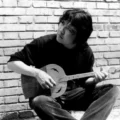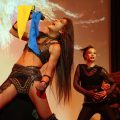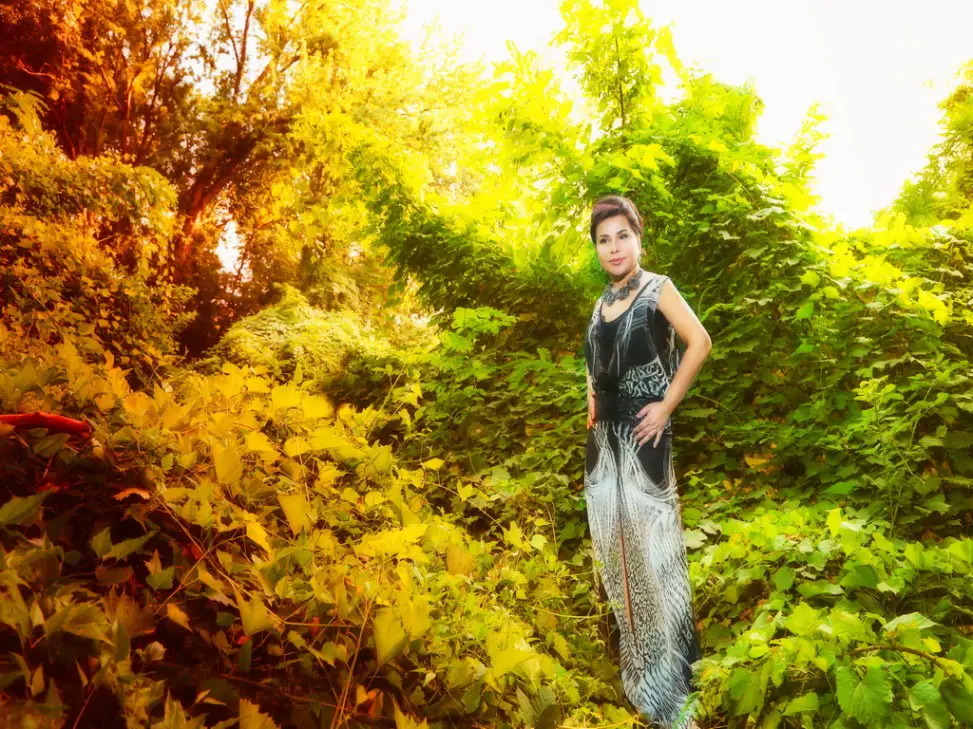The dombyra (домбыра) is a lute-style instrument. It is an ancient and quintessential piece of Kazakh culture and identity. In its most popular form, the dombyra has two-strings strung down a long, skinny neck and a pear-shaped body, flat at the front and rounded on the backside.
The standard English spelling of dombra is taken from the Russian word. However, the instrument itself is not Russian. In Kazakhstan, one of the instrument’s most important homelands, it is known as домбыра (dombyra). This article will be considering the instrument from a Kazakh perspective.
Dombyra History
In Central Asia, the history of the dombyra and similar instruments stretches back millennia. In 1989, high in the mountains of southeast Kazakhstan, Kazakh researchers discovered rock drawings believed to be at least 4,000 years old. Among the images, surrounded by four dancing figures, is a musical instrument shaped like a dombyra. Thus, it is likely that a dombrya-like instrument has been played in the region since almost the dawn of civilization. This speaks not only to its popularity but also to the influence it likely had on similar instruments.
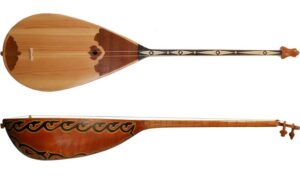
In the post-Soviet period, Kazakhs have looked to the past to promote national symbols of their independent country and the dombyra has been high on their list. The dombyra is, in fact, so important to Kazakh national identity that there is a popular saying: “Naǵyz qazaq qazaq emes, naǵyz qazaq – dombyra” (Нағыз қазақ қазақ емес, нағыз қазақ – домбыра), which, translated, means “A real Kazakh is not a Kazakh, a real Kazakh is a dombra.”
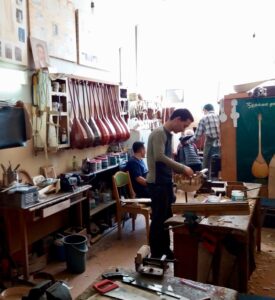
In 2018, President Nursultan Nazarbayev declared the first Sunday of July as National Dombra Day. On that Sunday, Nazarbayev then proclaimed to a crowd that the dombyra was not simply and instrument, but a “sacred heritage…the brand and passport of the Kazakh people.”
For Kazakhs, who were primarily engaged in mobile pastoralism, the small and portable dombyra offered a convenient form of entertainment that could easily be packed for travel and took up little space inside of a yurta (юрта), a felt-walled tent that itself can be easily broken down, moved, and set up again. Again, in English, such a traditional tent is most often called a “yurt,” spelled without the final “a.”
Though it took considerable ability to build a dombyra, a skill often passed down from generation to generation of dombyra craftsmen, the components were rather easy to come by. One needed only wood for the body and something from which to fashion strings. Popular types of wood used include spruce, pine, and elm while the strings are fashioned from animal hide, tendons, or intestines. To the trained ear, the different combinations of wood and string that can be used to make a домбыра produce varying sounds.
The Dombyra’s Sound: Music Mimicking Nature
The dombyra is played to mimic the sounds of the natural world that traditional Kazakh life is strongly connected to. If one listens closely, one can hear the sounds of the rustling of steppe grasses, the trickling of a mountain stream, the calls of birds, and of course, the grunts and neighs of the animal most revered by Kazakhs, the horse. Using the hollow body of the dombyra as an improvised drum, even the sound of beating hooves can be produced.
The most sacred performance involving the dombyra is the kui (күй), an instrumental epic piece that is also spiritual in nature. The word kui translates to “condition” or “mood” and the musical narratives are believed to touch the very soul of the listener, connecting them to the Creator. In fact, the kui is said by some to be “tanirdin sybyry” (тәңірдің сыбыры), the “whisper of God,” and plays an important role at family events and social gatherings.
The traditional art form serves as a remembrance and celebration of Kazakh heritage and is thus an important performative ritual of Kazakh identity. It is often introduced by the musician with the recounting of a piece of Kazakh history, mythology, or folklore which the music is meant to convey. The history of the kui and its central role in Kazakh culture and identity has earned it a place on the UNESCO Intangible Cultural Heritage List.
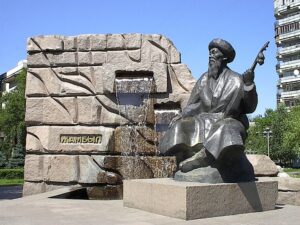
The style and form of the traditional kui changes subtly depending on the region from which it comes. The two major variants are the tokpe kui (төкпе күй), common to western Kazakhstan, and the shertpe kui (шертпе күй) which is common throughout much of eastern, central, and southern Kazakhstan. While dombra masters could go into great detail explaining the contrasts between the two, one of the primary differences lies in the how the kui is performed. The tokpe kui is typically more structured and intended to be played as it was originally composed while the shertpe kui is highlighted by improvised stylings of the individual performer.
The ability of a skilled dombyra master to speak through his instrument is perfectly highlighted by the Aqsaq Qulan Kui (күй «Ақсақ құлан»). This piece is about the son of Jochi Khan who had been killed while out hunting. Hearing of his son’s disappearance, the khan warned that anyone who reported his death would themselves be killed by pouring hot tin down their throat. Nobody dared tell the khan of his son’s fate until one day a musician came forward. Instead of telling the khan himself, the musician said that his dombyra would do the talking. Through the playing of the kui, the khan heard the beating of horse hooves, the chaos of the hunt, the screams of his young son, and the mournful tones expressing the sadness of the boy’s soul leaving this world. The khan wept and, true to his word, made the guilty party pay for reporting his son’s death. Hot tin was poured into body of the dombyra so that it could speak no more.
Dombyra Theatre: The Orteke
In addition to the kui, which holds such deep meaning and significance for the Kazakh people, the dombyra is also used as an instrument of simple entertainment. Perhaps one of the most unique forms this entertainment takes is in that of orteke (ортеке), a puppet theater with dombyra accompaniment. Orteke dates back millennia in the steppes and is considered a form of national theater in Kazakhstan, although the art has been slowly dying out. The name orteke comes from the Kazakh “тау теке” meaning “mountain goat,” animals that would capture the attention and imagination of onlookers as they gracefully darted to and fro across the mountainous terrain.
Above: Watch as famed Kazakh dombra player Zholaushi Turdugulov builds an orteke from scratch, explaining the history of the art form along the way, and listen as he and other featured players make the figurine dance by strumming the dombyra.
Orteke is performed with one or more mountain goat figurines. Each is built with eight to ten individual pieces jointed together to allow maximum freedom of movement. The figurines are affixed to a special table by a rod which runs down through the tabletop into a shaft. A wire or string is attached to the bottom of the rod which is then looped around the dombyra player’s finger. As the performer strums the dombyra, the figurine is thus made to dance upon the table in rhythm with the music. While the music of the dombyra is art within itself, so too is the orteke figurine which must be hand carved with precision to function correctly and be aesthetically pleasing. And though it is primarily a form of entertainment for children, orteke is an art form that all can appreciate.
There are other uses of the instrument and variations of its form as well. Some dombyra include those with a more rectangular body with a flat back commonly associated with Kazakhstan’s greatest poet, Abai Kunanbaev, who would play it to accompany his poetry. There are also three-stringed variants which, while less popular, can be found in Semipalatinsk Oblast in eastern Kazakhstan.
Above: Classic dombrya playing by Kazakh master Shamil Abiltay, recorded in 1969.
My Experience with the Dombyra as a Westerner
I was first introduced to the dombyra as a PhD student studying Russian and Soviet History. My research drew me to Central Asia where I eventually focused specifically on the Kazakh Steppe, a large tract of flat, arable land that extends the entire width of the country’s northern geography. I was instantly attracted to the sounds of the dombyra and made it a point to visit the Kazakh Museum of Folk Instruments upon my first trip to Almaty in the summer of 2012. Not only did I have an opportunity learn more about the history and cultural significance of the instrument, but I was able to watch a live musical performance in the museum’s auditorium.
I was so enthralled that, at the conclusion of the performance, I approached one of the musicians to inquire where I could buy a dombyra of my own. They were delighted in my interest to learn the dombyra but warned that I would want to stay away from the sorts of instruments readily found in the city’s bazaars and markets – those were simply tourist mementos and not fit for serious playing. For a quality dombyra, they told me, I would have to contact a master (мастер), someone skilled in the art of dombyra making. Short on time and funds, I unfortunately had to pass that time around, but my desire to buy a dombyra only grew.
I returned to Almaty at the beginning of 2017 with much more time and the requisite funds to purchase a proper dombyra. Though I saw what appeared to be quality instruments in a few instrument stores by my apartment, I decided to take no chances and contacted a dombyra teacher at the Kazakh National Conservatory in Almaty. Also delighted at my desire to learn the dombyra, he set up a meeting between myself and a man named Kuanish, who worked in the shop of famed dombyra maker and player, Zholaushi Turdugulov.
Upon meeting Kuanish, he led me straight back into the shop which was located in the recesses of Abai Kazakh National Pedagogical University. Once there, I was able to see the instruments being made right in front of me, meet Mr. Turdugulov, and purchase the dombyra for which I had waited so long.
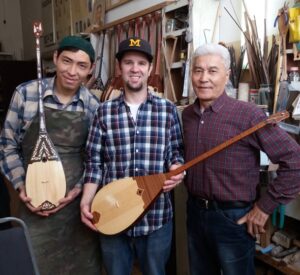
As a guitar player, the dombyra came somewhat naturally to me, though not as naturally as I first thought it might. The most typical tuning for a dombyra is, from the top string to the bottom, D, G. This tuning coincides with the two middle strings of a guitar in standard E tuning. To my own excitement, I was instantly able to pick up the dombyra and pluck a few melodies.
What I found to be the trickiest part of learning the dombyra involved the use of the hands. Unlike what is customary for many guitar players, the dombyra is played without the use of a plectrum. Instead, the pointer finger and thumb are pinched together and used to strum. Other methods of strumming and plucking, including a flamenco-style of strumming using each individual finger, can be employed to create many different sounds on the dombyra.
Guitar players may also find the technique of the non-strumming hand to be a bit unorthodox. The use of the thumb to wrap over the top of the neck is a technique that many guitar players use only seldomly. On the dombyra, however, the thumb is used extensively to fret bass notes on the top string while fretting accompanying melodies using the fingers on the bottom string.
Learning More about the Dombyra
For those that would like to learn more about the dombyra and how it is played there are many resources to explore online.
You can read a brief introduction to the Kazakh kui on the UNESCO Intangible Cultural Heritage website and watch the accompanying video to see master dombyra players from various regions of Kazakhstan play traditional kui music.
Above: an introduction to tuning a Dombrya given by a young Kazakh on YouTube.
For those interested in learning to play the dombyra, there are many resources available on YouTube and other social media platforms. For instance, the channel DombryraMektebi (above) is a hosted by a young Kazakh named Aiym. The lessons are given completely in Russian, but Aiym is an excellent teacher and much can be learned visually even if you don’t speak the language. Her use of graphics illustrating correct finger placement for the songs is exceptionally helpful and can be understood even by non-Russian speakers. She is methodical in her approach and viewers will appreciate the escalating difficulty of songs as her lessons progress.
There are also instruments similar to the dombyra, such as the dutar and komuz, which are commonly used throughout Central Asia and Southern Russia. The Slavs, including the Russians, also have a similar traditional instrument, adopted from the Turkic tribes, called a domra, if you are interested in exploring regional variations.
The dombyra continues to be celebrated by the Kazakh state and by popular society as an important symbol of Kazakh identity and an element of Kazak culture that has been cherished for centuries.
Above: The dombrya continues to be represented in modern culture as well. This rock-influenced concert by Kazakh dombyra player Dimash Qudaibergen was given in Moscow as part of a concert of folk musicians. He has over a million subscribers on his YouTube channel.
You Might Also Like
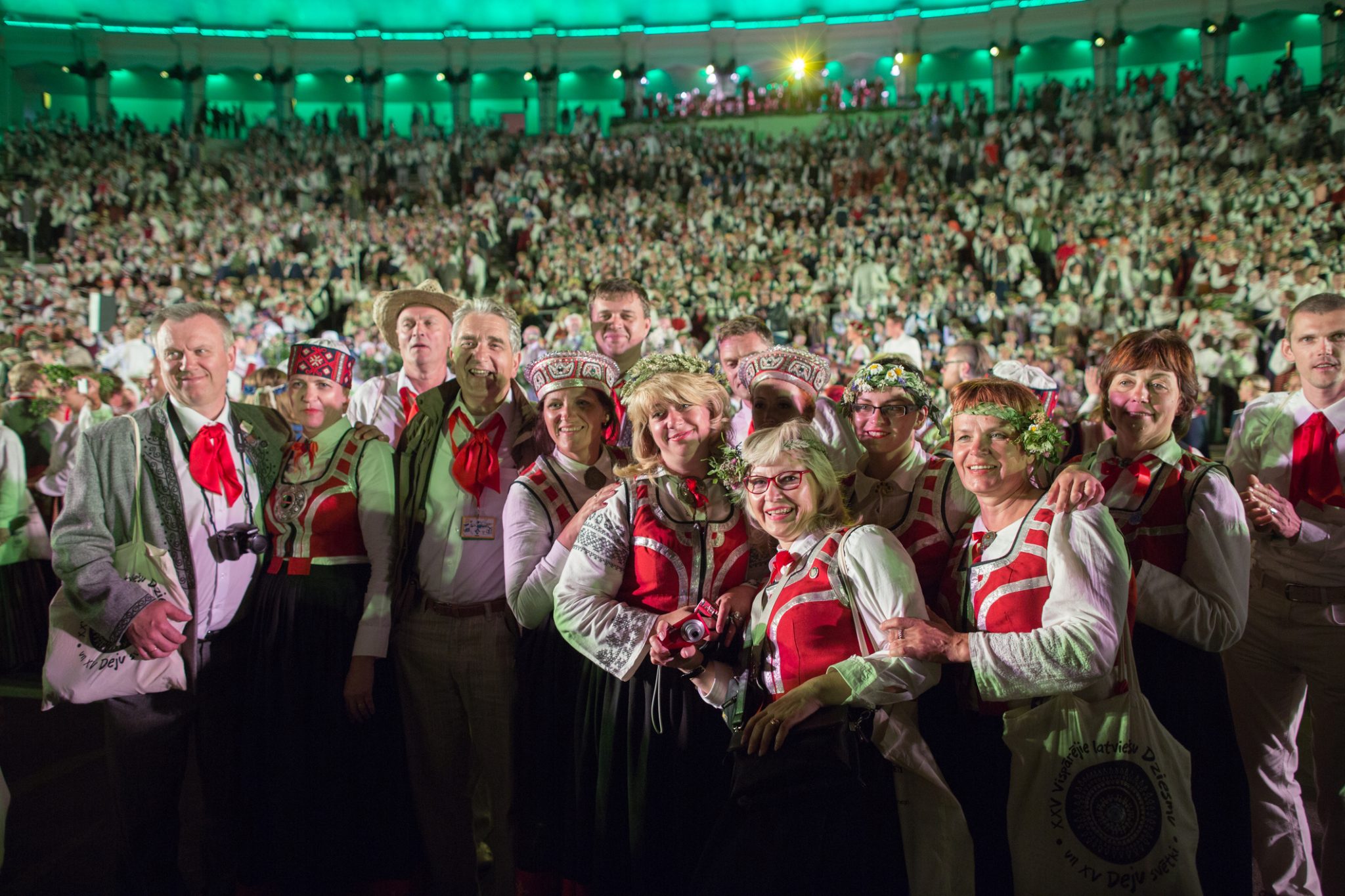
The Latvian Daina: How Four-Line Folk Songs Helped Birth A Nation
The Latvian daina is far more than a folk song. This tradition stretches back over a millennium, with some examples preserving linguistic forms long lost in modern Latvian. These songs are credited with recording Latvia’s prehistory and sustaining its culture through centuries of foreign rule. Dainas were central to the Latvian National Awakening, which eventually […]

From Folk to Future: Localizing Sound in Modern Ukraine
In the decades since Ukraine gained independence, music has played a vital role in shaping and expressing a modern sense of national identity. This has been especially visible in the creative ways artists have drawn from the country’s folk traditions—adapting village songs, instruments, and motifs into new genres that resonate with contemporary audiences. Whether through […]
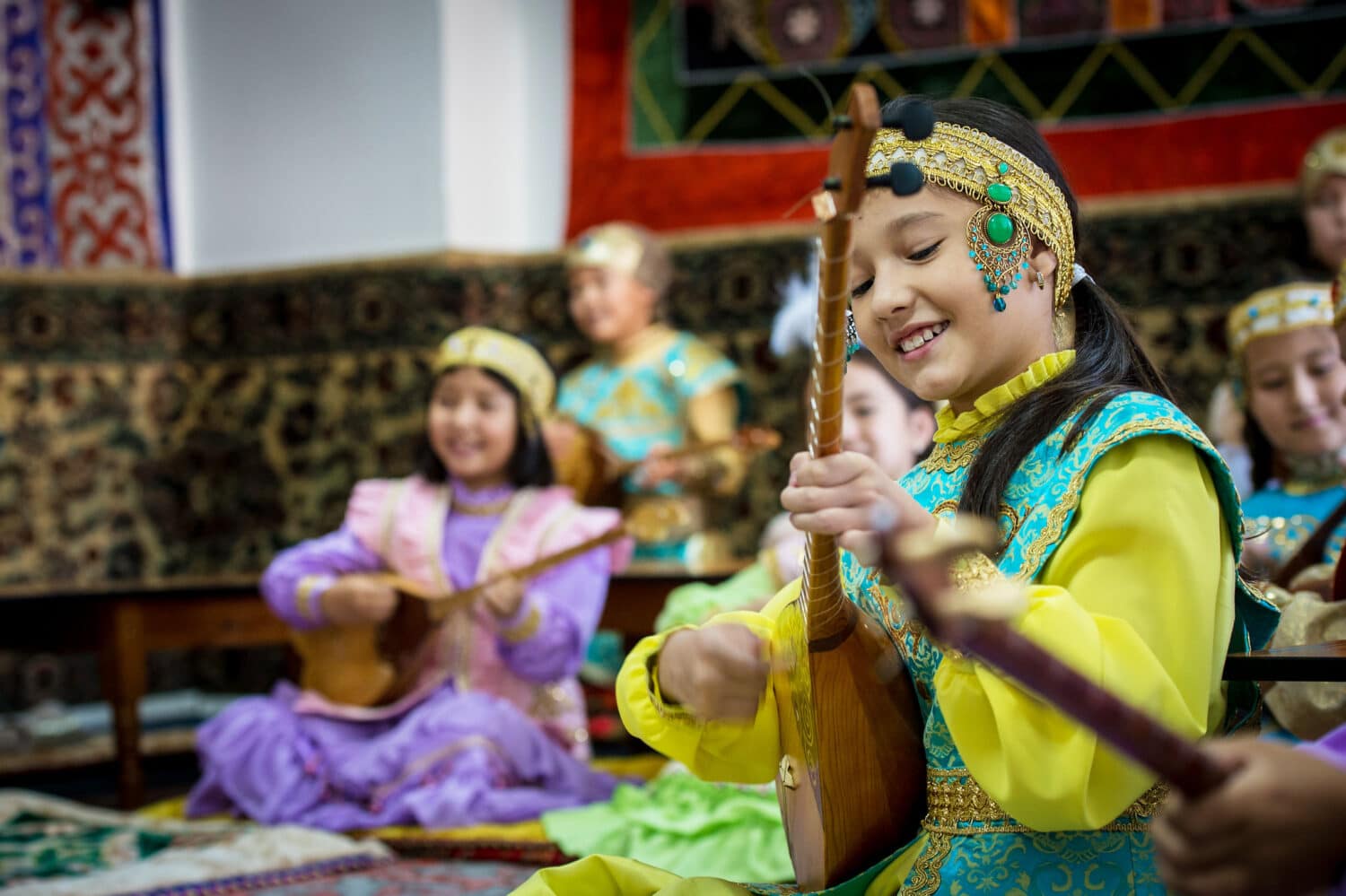
The Dombyra: The Kazakh’s Musical Soul
The dombyra (домбыра) is a lute-style instrument. It is an ancient and quintessential piece of Kazakh culture and identity. In its most popular form, the dombyra has two-strings strung down a long, skinny neck and a pear-shaped body, flat at the front and rounded on the backside. The standard English spelling of dombra is taken […]

Six Georgian Bands Bringing Traditional Polyphony into the Pop Music Age
Georgian polyphonic singing, added to the UNESCO Representative List of the Intangible Cultural Heritage of Humanity, is a musical technique in which a single song has several melodies, each sung concurrently, with no one tune dominating the others. In Georgia, the style varies by region, but the practice reflects both military, folk, and religious culture. […]
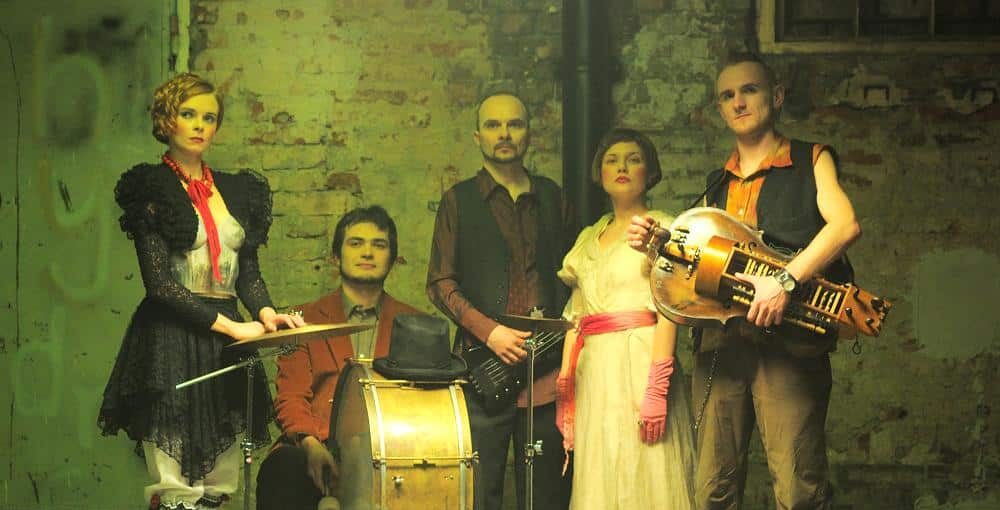
Żywiołak: Pagan Rock from Poland with a Modern Mindset
Żywiołak, initially formed in Warsaw in 2005, is a Polish folk rock band steeped in mythos. Its name references the Elemental, a magical being said to harness the power of nature in the form of air, fire, water, or earth. Their lyrics sing of epic battles (in Wojownik, or Warrior) and explore the traditions of […]



